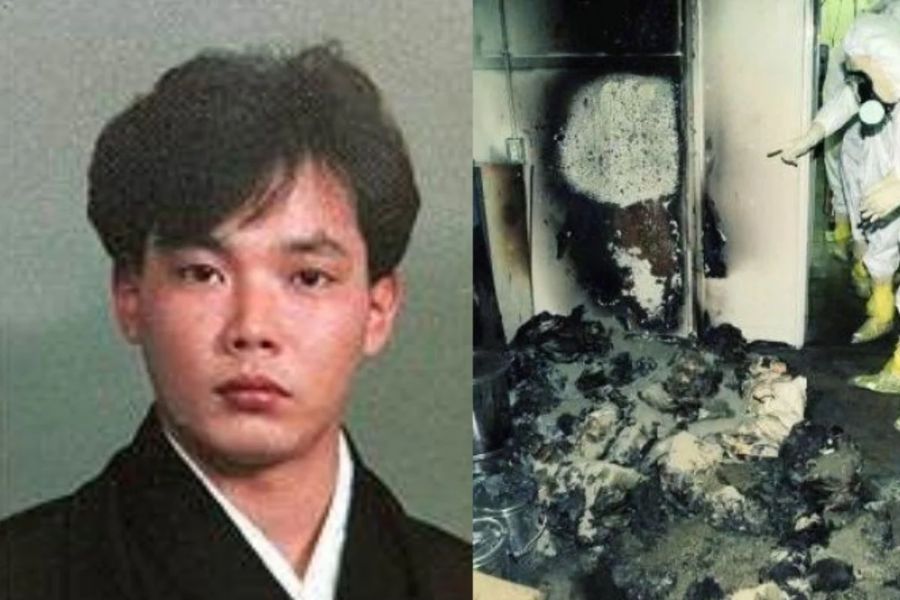Understanding Hisashi Ouchi's Skin: A Case Study On Radiation Exposure
Hisashi Ouchi's skin is a poignant reminder of the devastating effects of radiation exposure. This article delves into the tragic story of Hisashi Ouchi, a Japanese nuclear worker who became a symbol of the consequences of radiation accidents. Through examining his case, we aim to shed light on the critical importance of safety protocols in nuclear facilities and the biological implications of radiation on human skin. The insights shared here are not only educational but also serve as a cautionary tale for industries that involve hazardous materials.
In this comprehensive article, we will explore the details surrounding Hisashi Ouchi's life, the accident he was involved in, and the subsequent medical implications. Understanding the impact of radiation on human health, especially on the skin, is crucial for both public safety and medical research. This discussion will also incorporate expert perspectives and statistical data to ensure a well-rounded view of the topic.
We encourage readers to engage with this content thoughtfully, as it touches on sensitive subjects related to health and safety. By the end of this article, readers will have a clearer understanding of the risks associated with radiation exposure and the specific case of Hisashi Ouchi, as well as broader implications for public health and safety protocols.
Table of Contents
- Biography of Hisashi Ouchi
- The Radiation Accident
- Medical Implications of Radiation Exposure
- Understanding Skin Damage from Radiation
- Treatment and Recovery
- Safety Protocols in Nuclear Facilities
- Lessons Learned from Hisashi Ouchi's Case
- Conclusion
Biography of Hisashi Ouchi
Hisashi Ouchi was born on March 17, 1968, in Japan. He worked as a technician in the Tokaimura nuclear plant. His life took a tragic turn on September 30, 1999, when he was involved in a criticality accident. Ouchi was known to be a dedicated worker and had a bright future ahead of him. However, his name is now synonymous with one of the most severe nuclear accidents in Japan's history.
Personal Information
| Attribute | Details |
|---|---|
| Name | Hisashi Ouchi |
| Date of Birth | March 17, 1968 |
| Occupation | Nuclear Technician |
| Accident Date | September 30, 1999 |
| Nationality | Japanese |
The Radiation Accident
On September 30, 1999, a criticality accident occurred at the Tokaimura nuclear processing plant in Japan. Due to improper handling of uranium, a chain reaction was triggered, releasing a significant amount of radiation into the environment. Ouchi, along with two other workers, was exposed to lethal doses of radiation, leading to severe health complications.
The accident was attributed to multiple factors, including inadequate safety measures and lack of training. The incident highlighted the critical need for stringent safety protocols in nuclear facilities to prevent such tragic occurrences.
Medical Implications of Radiation Exposure
Radiation exposure can lead to a range of medical conditions, particularly affecting the skin. In the case of Hisashi Ouchi, the effects were catastrophic, leading to a series of medical interventions. Key medical implications of radiation exposure include:
- Acute Radiation Syndrome (ARS)
- Skin burns and lesions
- Increased cancer risk
- Damage to internal organs
Understanding Skin Damage from Radiation
Radiation can cause direct damage to skin cells, leading to a variety of symptoms. In Ouchi's case, the exposure resulted in severe skin damage, which can be characterized by:
- Redness and inflammation
- Blistering and peeling
- Necrosis of skin tissue
- Long-term effects such as scarring
The severity of skin damage often depends on the dose of radiation and the duration of exposure. Understanding these effects can help in better managing the health of individuals exposed to radiation in various settings.
Treatment and Recovery
The treatment for radiation exposure is complex and depends on the severity of the condition. In Ouchi's case, he received extensive medical care, which included:
- Supportive care for burns
- Skin grafting procedures
- Management of infections
- Pain management
Despite the best efforts of medical professionals, Ouchi's condition deteriorated, and he passed away on December 21, 1999, after enduring significant suffering.
Safety Protocols in Nuclear Facilities
Ouchi's tragic case underscores the vital importance of safety protocols in nuclear facilities. Some key safety measures include:
- Regular training for personnel on handling radioactive materials
- Strict adherence to operational safety standards
- Implementation of emergency response plans
- Routine inspections and audits of safety procedures
By learning from past incidents, the nuclear industry can work towards preventing similar tragedies in the future.
Lessons Learned from Hisashi Ouchi's Case
The accident involving Hisashi Ouchi serves as a critical lesson for the nuclear industry and public safety. Some key takeaways include:
- The need for comprehensive training and safety protocols
- The importance of a safety-first culture in hazardous industries
- Understanding the long-term health implications of radiation exposure
- Enhancing public awareness about nuclear safety
Conclusion
Hisashi Ouchi's story is a tragic reminder of the potential dangers associated with radiation exposure. Through examining his case, we can better understand the medical implications of radiation on skin and the importance of robust safety measures in nuclear facilities. We encourage readers to reflect on the lessons learned and advocate for safer practices in industries that handle hazardous materials.
If you found this article insightful, please consider leaving a comment or sharing it with others. Your engagement helps raise awareness about crucial health and safety issues.
Thank you for reading, and we invite you to return for more informative content on health and safety.
Avery Leigh Leaks: The Rise And Impact Of A Digital Phenomenon
NoodelMagazine: The Ultimate Source For All Things Noodle
Quitt.net: Unlocking The Future Of Remote Work And Income


